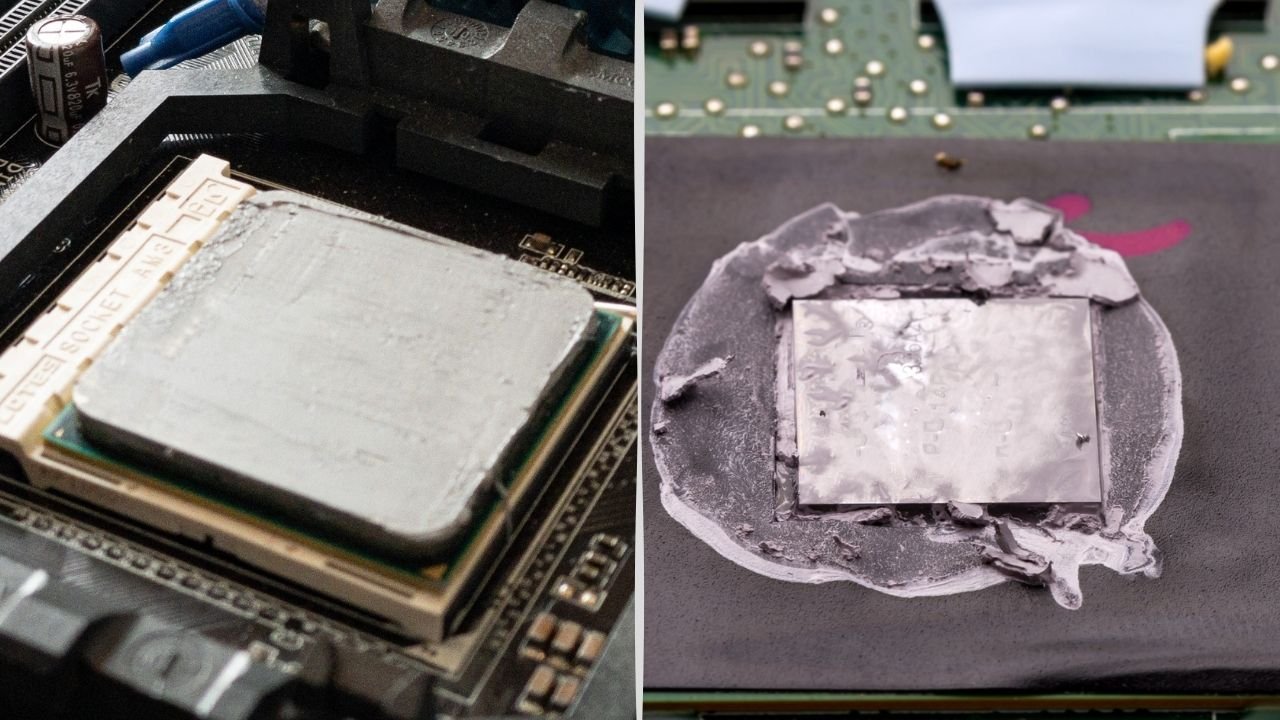What We Have Covered in This Article
Last Updated on March 17, 2023 by Editor Futurescope
Yes, thermal paste can go bad. If it’s too old, it can dry out and become crumbly, which won’t work as well at transferring heat. You can test whether your thermal paste is still good by seeing if it spreads easily and evenly when you apply it to a surface.
If it’s hard to spread or feels dry, it’s probably time to get some new thermal paste.
Thermal paste is a crucial component in keeping your computer cool. It’s responsible for transferring heat away from the CPU and into the heatsink. But what happens when thermal paste goes bad?
Bad thermal paste can cause a number of problems. First, it won’t transfer heat as effectively, which can lead to overheating and potential damage to your CPU. Second, it can actually insulate heat instead of dissipating it, making the problem even worse.
Finally, if the paste dries out or cracks, it can cause air pockets to form that further impede heat transfer. If you suspect your thermal paste may be going bad, it’s best to replace it with fresh paste. This is a fairly easy process and only takes a few minutes.
Simply remove the old paste from both the CPU and heatsink (be careful not to damage either surface), apply new paste to both surfaces, and then reattach the heatsink. That’s all there is to it! So if you’re worried about your thermal paste going bad, don’t be!
Just be sure to keep an eye on it and replace it if necessary. Your computer will thank you for it!
What happens if you use the WRONG amount of thermal paste?
How Can You Tell If Thermal Paste is Bad?
Thermal paste is used to fill the gaps between a CPU and its heatsink, and its main purpose is to conduct heat away from the CPU. Over time, thermal paste can dry out, harden or become crusty, and when this happens, it’s no longer effective at doing its job. If your computer has been running hotter than usual lately, it’s a good idea to check the condition of your thermal paste.
Here are four signs that your thermal paste is bad:
Your CPU temps are higher than usual.
If your computer has been running hotter than normal, there’s a good chance that your thermal paste has dried out and is no longer doing its job properly.
Check your CPU temps with a program like CoreTemp or HWMonitor, and if they’re consistently 10-15°C above their normal range, it’s time to replace the thermal paste.
The surface of your CPU looks dry or cracked.
Another visual cue that you may need new thermal paste is if the surface of your CPU looks dry or cracked.
This can happen if the existing paste has completely dried out, causing it to shrink and pull away from the edges of the CPU die. cracks in the middle of your CPU die are especially bad news as they can lead to leaks and shorts– both of which can seriously damage your CPU . If you see any cracks on the surface of your CPU , it’s definitely time for new thermal paste.
You notice strange noises coming from your PC.
Occasionally , these sounds can also be caused by failing hard drives or other moving internals parts– so if you start hearing any unusual noises coming from your machine , be sure to get it checked out by a professional right away just to be safe .
Does Thermal Paste Expire?
No, thermal paste does not expire. It is an inorganic compound that is stable and will not break down over time. However, it can degrade if it is exposed to extreme temperatures or UV light.
What Happens If You Use Old Thermal Paste?
If you use old thermal paste, it will no longer be effective at transferring heat away from your CPU. This could lead to your CPU overheating and sustaining damage. It is therefore important to regularly replace your thermal paste to ensure that it is performing optimally.
How Do I Know If My Thermal Paste Needs Replacing?
Most people don’t realize that thermal paste degrades over time. Even if you never open your computer, the heat and humidity can cause the thermal paste to break down and become less effective. That’s why it’s important to check your thermal paste every few months and replace it if necessary.
There are a few ways to tell if your thermal paste needs replacing. One is to simply look at it. If the paste is dry, cracked, or otherwise damaged, it needs to be replaced.
Another way to tell is by touch. If the paste feels gritty or sandy, it’s time for new paste. Finally, you can check the performance of your CPU cooler.
If it’s not cooling as well as it used to, or if your CPU temperatures are higher than usual, those could be signs that the thermal paste has degraded and needs to be replaced.


Does Thermal Paste in the Tube Expire?
If you have a tube of thermal paste that’s been sitting in your drawer for a while, you might be wondering if it’s still good to use. The answer is: maybe. It depends on the type of thermal paste and how it was stored.
Some types of thermal paste, such as those made with silicone or metal oxide, don’t have an expiration date. They can last for years without losing their effectiveness. Other types, such as those made with conductive grease, can start to degrade after just a few months.
If your thermal paste was exposed to extreme temperatures or sunlight, it might not work as well as it did when it was new. So if you’re not sure whether your thermal paste is still good, it’s best to test it before using it. Apply a small amount to your CPU and see how well it transfers heat.
If you notice any decrease in performance, replace the paste with a new one.
Does Thermal Paste Need to Be Replaced?
Most people believe that thermal paste does not need to be replaced very often, if at all. However, there are a few factors that can contribute to the need for replacing your thermal paste more frequently. If you live in an area with high humidity, for example, your computer components can corrode faster and cause your thermal paste to degrade quicker.
Additionally, if you use your computer for gaming or other resource-intensive activities regularly, the heat generated by your CPU can break down the thermal paste faster. In general, though, you should only need to replace your thermal paste every few years – and even then, only if you notice that your CPU is running hotter than usual. If you’re not sure whether or not it’s time to replace your thermal paste, err on the side of caution and give it a fresh coat.
It’s easy enough to do yourself (just follow our guide!), and it could save you from costly repairs down the road.
Expired Thermal Paste?
If your computer is more than a few years old, there’s a good chance the thermal paste that was originally applied to its CPU is now dried up and no longer effective. This can lead to overheating, which can in turn cause all sorts of performance issues. Replacing the thermal paste is a relatively simple task that anyone can do, and it’s well worth doing if you want to keep your computer running smoothly.
Here’s what you need to know about expired thermal paste. What Is Thermal Paste? Thermal paste is a conductive material that helps transfer heat away from the CPU and into the heatsink.
It’s important to use thermal paste because CPUs generate a lot of heat and need efficient cooling to avoid overheating. Overheating can cause all sorts of problems, including reduced performance, stability issues, and even permanent damage to the CPU. Thermal paste generally lasts for several years, but it will eventually dry out and become less effective over time.
If you’re not sure whether your thermal paste has expired, it’s easy enough to check; just touch the CPU heatsink (the large metal object that sits on top of the CPU) with your finger. If the heatsink feels significantly warmer than usual, then it’s likely that your thermal paste has expired and needs replacing. Applying New Thermal Paste Replacing thermal paste is fortunately very straightforward; here’s how to do it:
1) Power down your PC and unplug all cables
2) Remove the existing heatsink (it should just unscrew)
3) Clean off any old thermal paste from both the CPU and heatsink
4) Apply new thermal paste – a pea-sized amount in the middle of the CPUis usually sufficient
5) Reattach heat sink
6) Plug everything back in
7) Check temperatures – they should be lower than before You’ll need to buy some new thermal paste – we recommend Arctic Silver 5 or similar high-quality product.
Make sure you get actual thermal paste rather than any other kind of grease or compound – this isn’t something you want to skimp on!
Conclusion
Thermal paste is a substance used to fill the gaps between a CPU and its heat sink. Over time, thermal paste can dry out and become less effective. If your computer is running hotter than usual, it may be time to replace the thermal paste.









